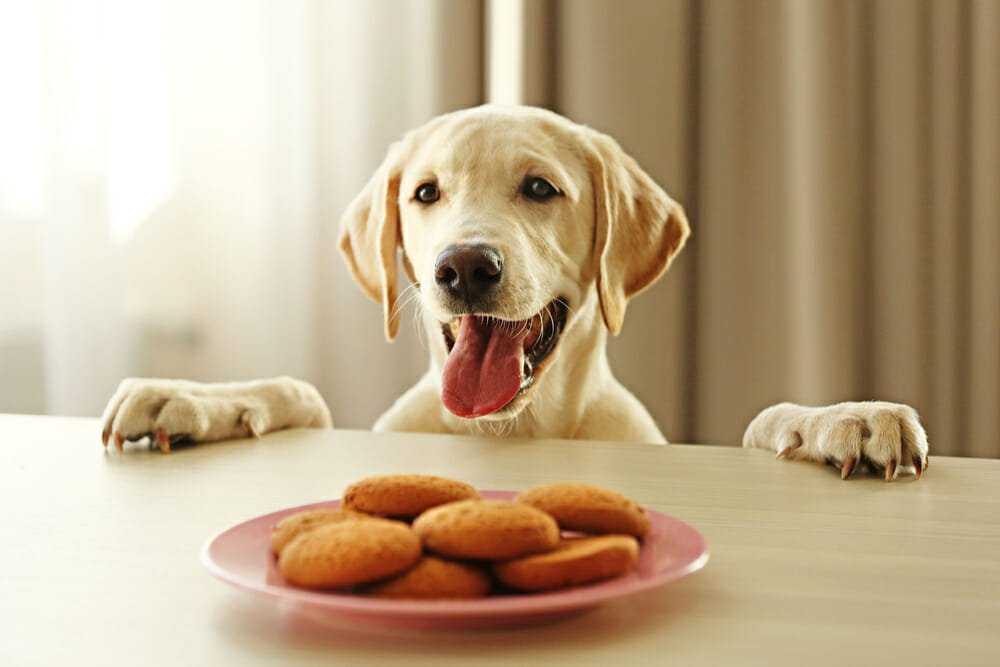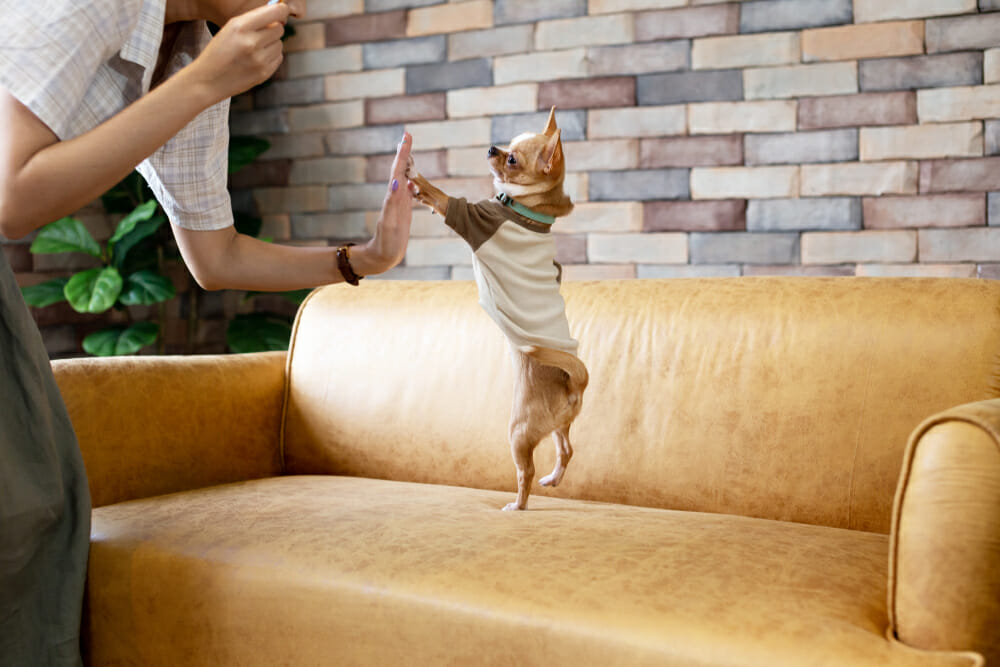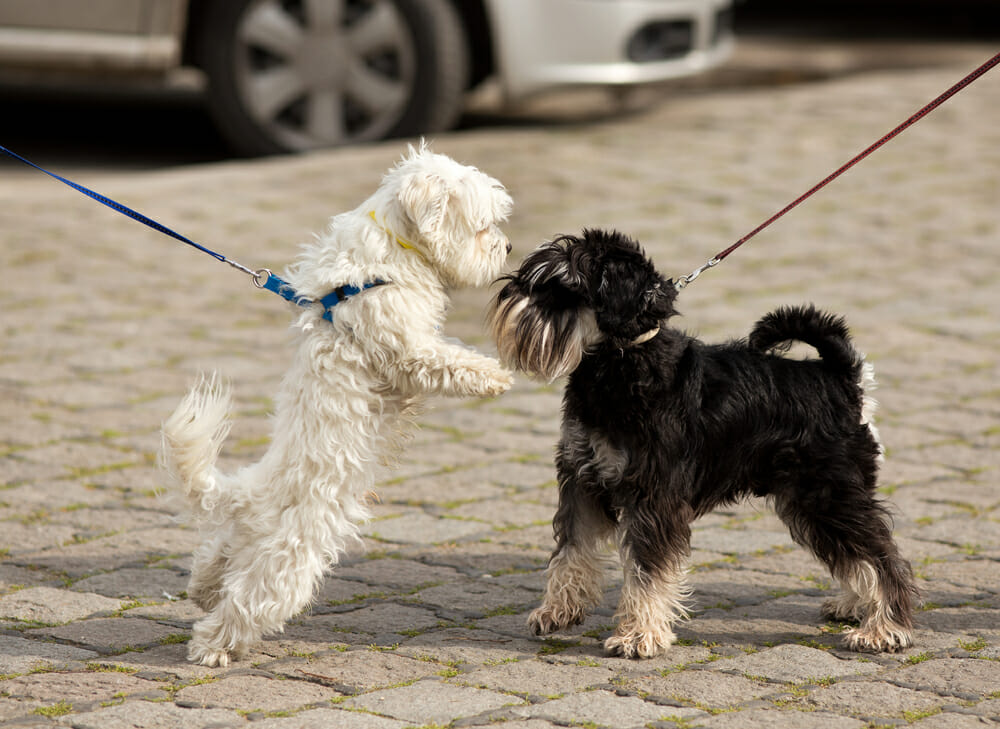Have you ever heard the phrase “Set your dog up for success!”? I’m sure most puppy parents have when first starting out on their training journey… but what does it really mean? As pet parents, it’s our responsibility to ensure that our dog is safe and that we’re giving them the tools they need to succeed in a training environment. Setting your dog up for success involves two important components on our end: management and consistency.
Putting the components into action
Management is an important part of every dog’s training or behavior modification plan but what does that mean? The goal of management is to help control your pup’s environment early on, thereby eliminating the opportunity for your dog to practice undesirable behaviors. Any time your pup gets to practice a behavior you don’t like, it’s reinforcing to them that they can do that behavior. So you want to reduce the possibility of them ending up in situations where they can practice unwanted behaviors.
Make it easy for your pup!
It’s important to set your dog up for success, especially in the learning stages of the training process. So, we don’t want to tempt them or put them in more difficult situations early on! If you don’t want your dog to chew your shoes, while you’re working on teaching those “Leave-It” and “Drop-It” cues, you’ll want to put your shoes up and out of your dog’s reach so they can’t practice the behavior of chewing shoes. If you don’t want your dog to jump up on guests when they enter your home, put your pup behind a barrier, or on a leash to help keep them from practicing jumping up.
Remove temptations to help with success

It’s our job to manage our dog’s environment and prevent them from having an undesirable behavior reinforced. I know if I’m trying to eat fewer sweets it’s going to be harder for me if I leave a jar of cookies around me all day… the same is true for our pups! If you leave food on the coffee table at your dog’s nose level and turn your back on them without teaching them an alternative behavior, can you really be mad at them for eating your food when it’s right in front of them? You have to ensure that your dog doesn’t have the ability to practice the unwanted behavior and that they have been provided with training and tools to know what behavior you do want from them in that scenario, such as going to their mat or bed instead.
You’re part of training too to make sure your dog is setup for success
Ultimately, with management, we want to think “expect less of your dog and more of yourself”. How can you manage your dog’s environment to ensure they aren’t able to get in trouble when you’re not supervising them? We don’t want to give them any opportunity to fail, especially when they’re still learning what behavior you want them to do instead of the behavior you don’t want them to do.
Consistency is key
Be consistent in your communication with your pup and manage the expectations that you set for them! Your dog is still learning which behaviors are acceptable and which ones are not. When your expectations are consistent, you help your pup understand how they should behave in each situation. When you allow your dog to practice a behavior you find to be undesirable in some contexts, but then reprimand them for it in other contexts, you will confuse your dog.
Put it to work

Say you’re working on teaching your dog not to jump on guests when they enter your home, but when you enter the home you allow your dog to jump on you because you think it’s cute. Your dog would not be able to generalize that they shouldn’t jump on guests if they are able to jump on you. We would want to be consistent with your dog not being able to jump on people and instead teach them an alternative behavior like having all four paws on the floor in order to be rewarded with attention, or teach them to go to their bed whenever someone walks into the home.
Manage your expectations for your dog. Set reasonable goals and do everything you can to help your dog achieve those goals! We often expect our dogs to just “know” what we want from them, or what the “right” behavior is in a given circumstance. Then, if they don’t meet those high expectations, they may be labeled as defiant, when in actuality they just haven’t been provided with the tools to succeed in that particular environment under those unrealistic expectations.
Other Tips for Success:
Provide mental and physical stimulation every day!
Did you know that 15 minutes of training can be more exhausting for your dog than a run around at the park? Also, walks dedicated to sniffing are extremely important for your dog’s daily wellness. Mental stimulation can be provided in the form of training, puzzle toys, snuffle mats, and decompression walks. When both of your dog’s mental and physical needs are met this helps your dog’s overall behavior and prevents behavioral issues arising!
Find opportunities to let your dog be a dog
Letting your dog practice species-appropriate behavior is extremely important to their quality of life. Find “legal” ways for your dog to practice species-appropriate behavior like digging, sniffing, and chasing to help meet their needs and set them up for success in their day to day life.
Keep your dog leashed in public

If your dog doesn’t have a reliable recall cue, don’t put them in a situation where there’s a risk of them not coming when needed! Keeping a leash on your dog when in an open space or an on-leash area provides security that your pup won’t run off or interact with other dogs who might not be interested in or capable of comfortably engaging with them.
Hopefully now you have a better idea of how to set your dog up for success! We always want to ensure our dogs have the tools they need to meet the goals we set for them and ourselves. Your dog will appreciate you looking out for them and helping them be successful in their training program!
Have a question for the experts? Please send them (and puppy photos are welcome too, of course!) to whatthepup@spotandtango.com.




















